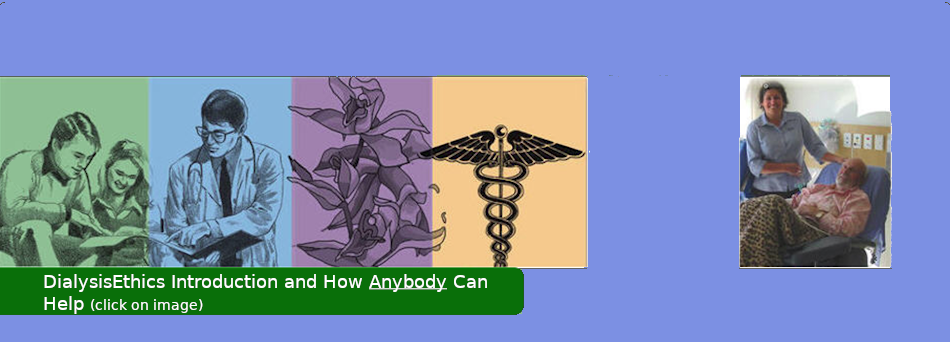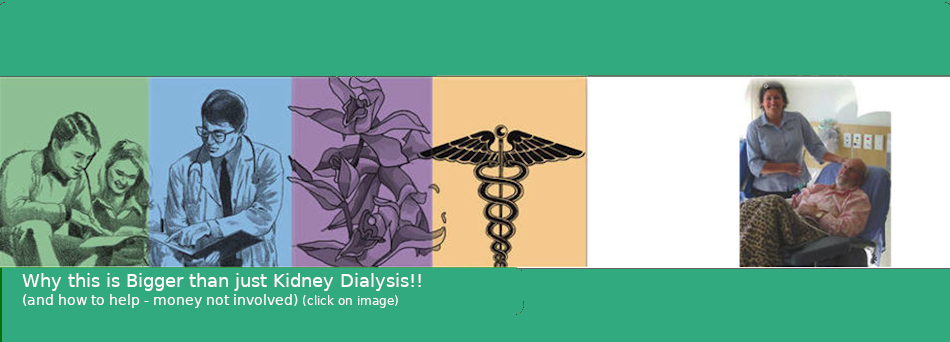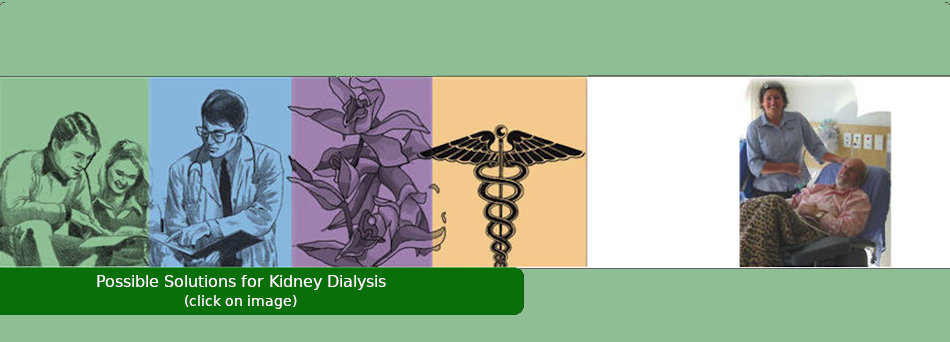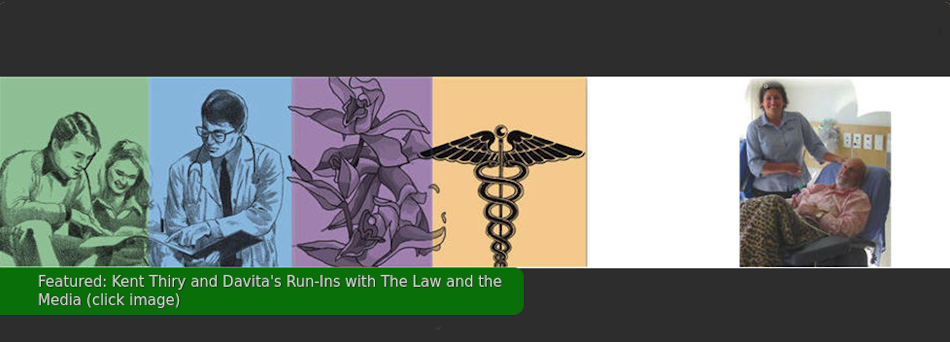***Introduction***
- Details
- Written by: Super User

Hi, my name is Chris and I've been a member of DialysisEthics since 2000 and I helped coordinate the activities of this patient advocacy organization. This site is being kept up as a reminder of the history of this field of medicine. For dialysis patients currently with issues and problems, is recommended people contact the folks at Dialysis Advocates.
***Get the lowdown on your clinic!***
- Details
- Written by: Super User
Dialysis Facility Tracker
Updated Dec. 22, 2010
By Robin Fields, Al Shaw, and Jennifer LaFleur, ProPublica, Dec. 22, 2010
This site is for dialysis patients and others who want to learn about the quality of care at individual dialysis clinics. Among other things, you can learn how often patients treated at a facility have been hospitalized, report certain types of infections or are placed on the transplant list. The information is submitted by facilities and collected by contractors of the Centers for Medicaid and Medicare Services, the federal agency that oversees most dialysis care.
Related story: Dialysis Data, Once Confidential, Shines Light on Clinic Disparities »
***The Strangest Show on Earth!***
- Details
- Written by: Super User

Denver-based health-care mogul Kent Thiry runs DaVita, his multibillion-dollar kidney dialysis company, unlike anything the buttoned-down corporate world has ever seen. Are his carnival-like theatrics a stroke of genius, or are they designed to distract people from the hard truths about his business?
***NonProfit vs. for-profit***
- Details
- Written by: Super User
New Study Shows Higher Mortality Risk at For-Profit Dialysis Chains
by Robin Fields
ProPublica, Dec. 9, 2010, 2:03 p.m.
5:01 p.m.: This post has been updated.
Patients treated at dialysis clinics run by the largest U.S. for-profit chains have a higher risk of death than patients treated by the biggest nonprofit chain, a study released today in the journal Health Services Research concludes.
The outcome gaps are substantial: Patients at the largest for-profit chain were found to have a 19 percent higher risk of death than patients receiving care at the nonprofit; at the second-largest chain, the risk was 24 percent higher.
Page 11 of 14













